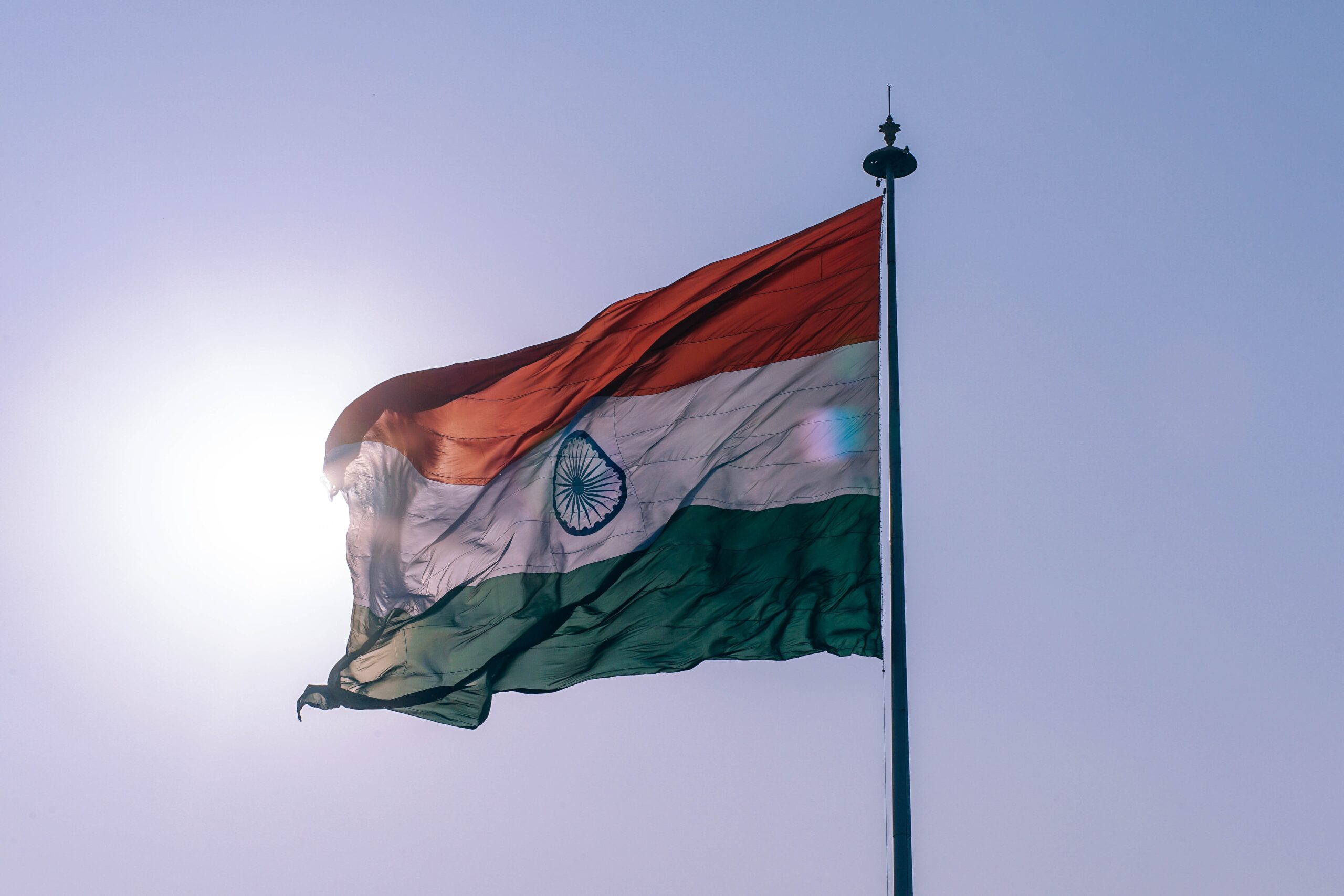In mainland India, the tribal and ethnic communities of the Northeast are widely associated with secessionist movements. But during India’s freedom struggle, countless freedom fighters from the Northeast laid down their lives for India’s freedom. Mainland Indians should learn about them.
74 years after independence, Northeast Indians are facing an identity crisis in their own country. Recent racial outbursts by a young YouTuber from Punjab, who commented on the looks of a former Union minister from Arunachal Pradesh and then insinuated that the Indian state is a part of China, created huge opprobrium.
Students, youth and noted personalities across the country created a Twitter storm, asking the National Council of Educational Research and Training (NCERT) to reserve at least 10 percent of the school-level social sciences curriculum for the history of freedom fighters from the Northeast.
Given the remoteness of the Northeast and the difference in cuisine, appearance and cultural features with mainland Indians, Northeast Indians are often misidentified as ‘non-Indians’. Often, these differences make them targets of abuse. Repeated assaults – such as the horrendous killing of Nido Taniam, a young man from Arunachal Pradesh in 2014 – distorts the very sense of their belonging to the nation, as if being from the Northeast is sufficient to make one a suspect in the eyes of the nation.
It is a major sociological and political failure that Northeast Indians are not recognised as mainstream Indians, with dignity and equality.
In this context, the inclusion of freedom fighters from the Northeast in school textbooks might create a sense of shared nationhood. Given the context and situation in the Northeast, many sacrificed their lives in resistance to British colonialism.
In Meghalaya, U Tirot Sing, U Kiang Nangbah and Pa Togan Nengminja Sangma, among many others, are celebrated for their bold sacrifice of life, facing British bullets, torture and repression.
Meghalaya’s Martyr
U Kiang Nangbah’s epic resistance to British rule in Meghalaya, in spite of the Raj’s successful annexation of the territory of the erstwhile Jaintia kingdom in 1835, establishes what historians have called “rebel consciousness”.
From 1835 to 1857 (i.e., until the First War of Independence), British rule in the Jaintia Hills interfered with the traditional Jaintia religion, U Niamtre. This amounted to interference with what Sri Aurobindo, in his idea of the republican freedom of ancient India, would have termed as a “greater sovereign than the king” – the dharma.
The troubles began when the British planned to permanently end the Jaintia Kingdom, which symbolised the region’s ancient republican freedom. Towards this, the British intended to collect ransom from the Jaintia king, but failed to do so. Out of vengeance, the British established a police station in the heart of the Jaintia region, at a place called Jowai in 1855, which was meant to act as an outpost of power (Jowai is presently the district headquarter of the West Jaintia Hills district of Meghalaya, which was the epicentre of the struggle for freedom led by Kiang Nangbah in the mid-19th century).
Emboldened by the repressive capabilities of the police and the army, the British administration quickly did three things: They attempted to prevent the traditional cremation of the dead, imposed a house tax, and undermined the traditional Jaintia belief in the sacred forest, which was believed to be the habitat of the gods they worshipped.
Such acts of repression made Kiang Nangbah restless, and he wanted to strike back at the British when the opportune moment arrived.
The British introduced income tax in 1861 and Kiang Nangbah and his followers decided not to pay it. The British also disrupted the traditional dance festival, Ka Chad Pastieh, held in Yalong, by seizing the traditional weapons of the Jaintia people. Then, the British burnt the weapons to humiliate the natives.
The British were also hell-bent on hurting the self-esteem of the Jaintia people by deriding them as chnongs (heathen) and by forcibly separating them from the town area of Jowai as well. This policy, of humiliating the native Jaintia populace, pushed Kiang Nangbah to revolt.
In mid-January 1862, a huge group of guerrilla fighters led by U Kiang Nangbah organised an armed attack on Jowai police station with guns, swords and other ammunition. They burnt down the police outpost and destroyed it completely by inflicting casualties on the British police and their native staffers.
For the first time, the British could not sense the coming of a big uprising from the natives, as their intelligence could not trace the guerrilla tactics deployed by Kiang Nangbah and his compatriots. The British brought in their Eastern Command in March 1862, but the rebels, under the leadership of Kiang Nangbah, attacked British outposts and inflicted heavy damage before they disappeared into jungles in the adjacent Myngkrem, Myntwa and Myntdu.
Cornered, the British further mobilised troops from the Punjab Infantry, Rattray’s Sikh Military Police, Native Infantry and Assam Light Infantry. But the rebels engaged in little battles everywhere in areas such as Mynso, Raliang, Nartiang, Shangpung and Barato, and everywhere, the British forces had to face heavy casualties and had to retreat.
Finally, with the help of some traitors, the British captured an ailing U Kiang Nangbah from his hideout, but he refused to surrender. After he was captured, the British organized a mock trial and hanged him in a place called Iawmusiang in Jowai on 30 December 1862.
As he was dying, Kiang Nangbah famously told his compatriots and family members that if, after his death, his face tilts toward the east, then the country will be free from the British within the next 100 years; but if it tilts west, then British rule shall continue for the next 200 years. It is widely believed that Kiang Nangbah’s face tilted towards the east, and true to his prediction, within the next 100 years, India was freed from British rule.
Northeast Indians Across the Freedom Struggle
Similarly, Nagas who were part of Subhas Chandra Bose’s Indian National Army (INA) laid down their lives on the battlefields of East and Southeast Asia. Some of the most dedicated INA soldiers, numbering in the hundreds, came from the Northeast and worked in various capacities in the INA. Illustrious Naga nationalist Angami Zapu Phizo was a member of INA.
Stories of Veer Tikendrajit, Rani Gaidinliu, Haipou Jadonang and Hijam Irabot from Manipur and Nagaland are illuminatingly patriotic. Similarly, freedom fighters like Darthawma Renthlei, Ropuiliani and others from Mizoram were the epitome of selfless sacrifice and valour. Assam’s hall of martyrs includes Kanaklata Barua, Kushal Konwar, Mukunda Kakati, Bhogeswari Phukanani, Ullaskar Dutta, Asit Ranjan Bhattacharjee, and many other selfless sons and daughters of undivided mother India who adorned the narrative of the freedom struggle in the Northeast.
In sharp contrast to the stereotypical perception in mainland India of Northeast Indian ethnic and tribal communities as ‘secessionists’, the history of the freedom struggle against the British colonial Raj clearly establishes the Northeast’s contributions and sacrifices for a unified India.
Movements for autonomy in Nagaland, Assam, Mizoram and other places in the Northeast create the impression of a non-Indian affiliation, but this misperception would be corrected if the legacy of the freedom struggle percolates through the school curriculum at all levels across India. If this inclusive narrative of the Indian freedom struggle was given the right emphasis, perhaps the incessant racist slurs against people from the Northeast would cease. Even presently, the Bezbaruah Committee’s recommendation – of penalising anyone for using racist slurs against people of the Northeast – can be better enforced if there is greater awareness.
Indian national identity must recognise regional differences in a respectful manner and give proper representation in formal schooling for Northeast Indian history and culture. India needs this inclusivity for a more harmonious national fraternity.
Prasenjit Biswas is an Associate Professor of Philosophy at North-Eastern Hill University, Shillong, Meghalaya. He is an author, a political analyst and a human rights defender based in Shillong, Meghalaya and Silchar, Assam.


